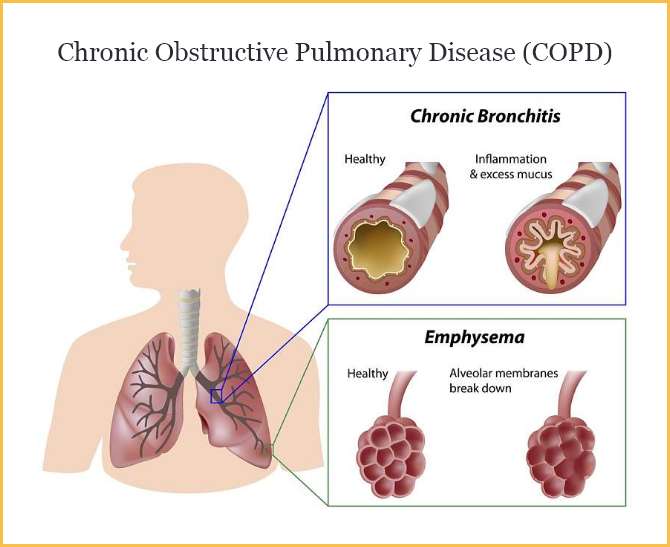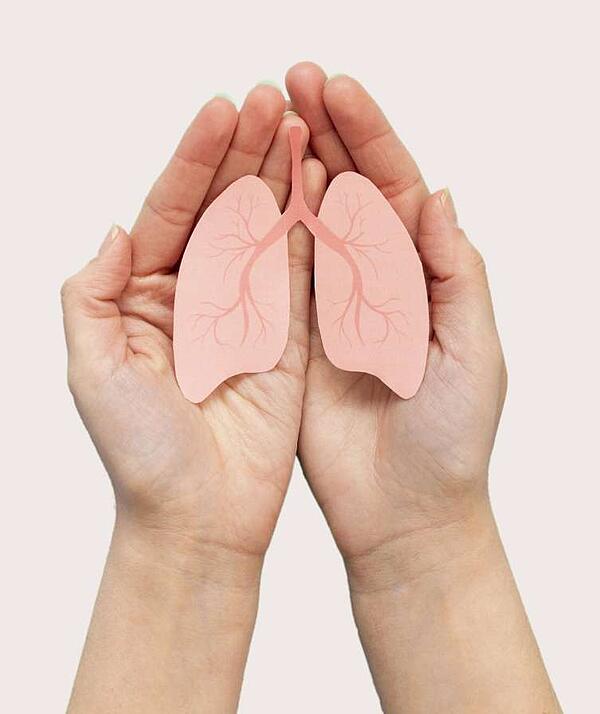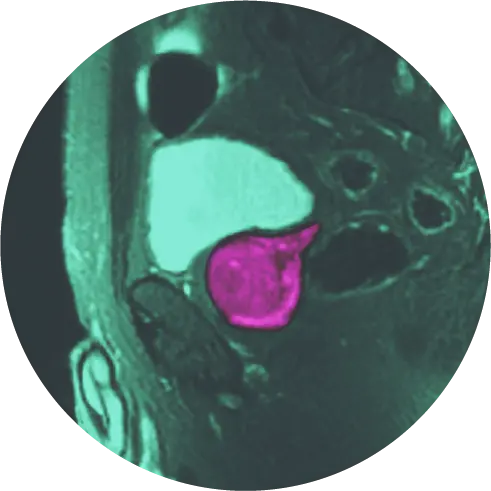Chronic Obstructive Pulmonary Disease (COPD)
Know Your Risk!
- Nearly 15 million people are estimated to be diagnosed with COPD in the United States
- 10-15% of heavy smokers will develop COPD
- Smoking causes 8 out of 10 COPD-related deaths
- Long-term exposure to dusts, hot vapors, and chemical fumes can increase the risks of COPD. Exposure to asbestos dust (also known to cause a condition called asbestosis) is a common example.
- Chronic conditions of asthma are associated with the likelihood of COPD onset and is specially aggravated by smoking.
- In a very small percentage (1%) of patients, an uncommon genetic disorder alpha-1-antitrypsin (AAT1) deficiency is the cause of some cases of COPD.


Gold Scores: The Current Standard of Diagnosis
Pulmonary Function Tests: Spirometry-based test is the most common assessment done at the primary physician’s office. It is a functional test that measures the lung capacity (ability to breathe in and out and hold air) and the lung volume. The Global Initiative for Chronic Obstructive Lung Disease (GOLD) foundation has established recommendations for diagnosis and treatment of COPD based on the spirometry scores (GOLD scores) and other symptoms.
| Gold Score | Airflow limitation classification for patients with FEV1/FVC ≤ 0.7 | Category |
| 1 | FEV1 ≥ 80% | Mid |
| 2 | 50% ≤ FEV1 ≤ 80% | Moderate |
| 3 | 30% ≤ FEV1 ≤ 50% | Severe |
| 4 | FEV1 ≥ 30% | Very Severe |
FEV1 = forced expiratory volume in one second
FVC = forced vital capacity
COPD diagnosis: FEV1/FVC < 0.7
Determining the GOLD status requires a multidimensional assessment of a patient’s spirometry, symptom burden, and frequency of COPD exacerbations. COPD exacerbations are episodes of acute symptoms that require immediate attention, in most cases hospitalization and ventilation support etc.
Why you should not rely on gold scores alone:
COPD is a highly heterogeneous condition and simple lung function tests may not be sufficient. Patients may have significantly different levels of emphysema, or be in different stages of the disease, despite having similar GOLD scores.
Individual assessment of the disease stage and what it means for one’s health, will help develop the best treatment plan.

The HALO Solution: Personalized Report
HALO Precision Diagnostics™ uses computed tomography (CT) imaging-based report coupled with artificial intelligence to inform individual lung condition and provide a highly personalized, and visually quantitative report. HALO has partnered with IMBIO to bring an advanced diagnostic option called the Lung Density Analysis™ (LDA).
LDA applies big data analysis to paired chest CT studies to provide a quantitative report of density categories by lung region, enabling data-based decisions for personalized care.
Traditional metrics of FEV and GOLD scores are generic predictors of COPD
LDA-coupled imaging maps the lung function accurately.
In the case shown here two patients with identical GOLD scores and similar %FEV, show very different conditions of emphysema.
This suggests the significance of a personalized diagnosis to plan treatment.
| Patient A | Patient B | |
| GOLD scrore | 2 | 2 |
| FEV | 61% | 62% |
| COPD AI |  |  |
| Normal | 56% | 43% |
| Functional | 41% | 26% |
| Persistent | 3% | 25% |
Schedule a Consultation
Submit this form and we will contact you, usually within 24 hours, to answer your questions.
Early Detection
Saves Lives




